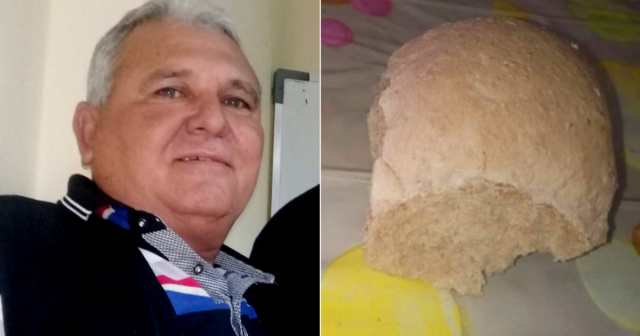The Instituto de Investigaciones de Investigaciones de Viandas Tropicales (INIVIT) of Villa Clara promotes the use of la flour to produce bread and pizza, according to a report from official media.
"You can replace one hundred percent of the wheat flour with cassava flour to make the pancake, you have seen it here,” he told the telecentre. Telecubanacan an official whose name was not specified in the report.
The man also added that you can also replace 50 percent of the wheat flour with cassava flour to make bread and “70 percent to make pizza.”
According to the report, before processing the tuber to make flour for human consumption, it must be dried because it is mostly composed of water.
“How many products can be made from cassava flour and one problem we have is that we are depending on the wheat that is imported for everything we are talking about,” stressed the interviewee.
In addition to its use in baking and pastries, INIVIT proposed the use of this food as a dietary supplement for pigs and cattle.
Not only the root, but also the leaf - said the official - are ground to “enrich” the pigs.
For beef feed, he explained, one hectare of cassava can produce between 100 and 120 tons in three cuts a year, which represents three tons of annual protein, the man pointed out.
In the face of the national crisis flour shortage For the production of bread, cookies and other products, in Cuba they have proposed several “alternatives” to deal with the absence of that primary component of bread.
Cassava has become one of the great protagonists of the Cuban food industry in the face of lack of bread, denied by the government on several occasions.
Currently it is one of the most used agricultural products to make “extenders” that would replace wheat flour in bread and pastry formulations.
In Cienfuegos a company is working on experimental formulas to replace wheat flour with cooked cassava turned “into a gel”. After previous cooking, it becomes a paste to which flour is added.
As they recently pointed out, their purpose is to experiment in these cassava productions until 100 percent is that product.
In Camagüey, creativity has gone even further, since this food It is also used in the preparation of hamburgers and croquettes.
In this case, official sources explained, the cassava is processed with machinery that grinds cookies, after manually removing the peel, drying it in the sun for three to four days and then grinding the tuber into flour.
What do you think?
SEE COMMENTS (2)Filed in:
